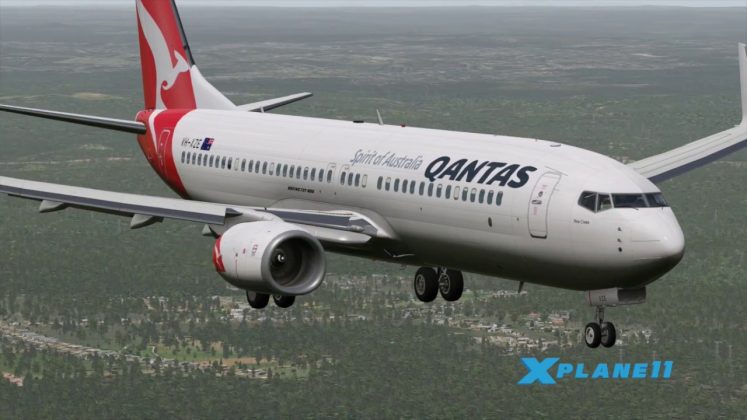If you’re interested in flying, Microsoft Flight Simulator 2020 and X Plane 11 both offer comprehensive flight training options to help you develop the skills and knowledge required to be safe and successful in the cockpit.
Main Difference
However, these two flight simulators differ in several ways, so it’s important to understand their differences before you invest your time or money into any of them. Let’s take a look at some of their key differences below. Note that while this article uses Flight Simulator 2020 as an example, this information also applies to Microsoft Flight Simulator X.
Introduction To Microsoft Flight Simulator 2020
While they’re not making an official announcement just yet, a recent job posting at Microsoft indicates that there will be a 2020 version of their popular flight simulator franchise. Although many gamers might have been hoping for more of a sequel to either FSX or perhaps even 2003, it seems we’ll be getting something more along lines of X-Plane.

Introduction To X Plane 11
The Cutting Edge of PC Aviator Experience If you’re looking for a full-featured, flight simulation experience, look no further than X-Plane. This software offers an enormous variety of airplanes, airports, weather conditions, and time zones to explore.

Featuring breathtaking graphics with 3D cockpits and flight dynamics that can be fully customized by users, this simulator offers extreme realism without sacrificing usability. For a fully immersive flying experience, look no further than x-plane.
Read More: Minecraft vs. Roblox: What’s the Difference?
Key Difference Between Microsoft Flight Simulator 2020 and X Plane 11
- Performance: One of the biggest differences between Microsoft Flight Simulator and X-Plane is how realistic they are. While both are definitely on par with each other when it comes to how easy it is to learn controls, landing, taking off, etc., what sets them apart from each other is their level of performance. If you’re not looking for true-to-life experience, then one might be better than another.
- Price: The biggest difference between these two flying games is price. MSFS 20 is considerably more expensive than X-Plane 11 (129.95 vs 79). If you go with MSFS, you’ll also need to pay a yearly subscription fee of $59.99 to use their service, called LiveATC.
- Licensing: The main difference between Microsoft flight simulator 2020 and X plane 11 is their licensing. While MS FS is free to use, it’s not free to own, which means it will not be installed on your computer when you download it. X plane can be downloaded for free but to truly enjoy its features you need to purchase a license. Both are available for PC.
- Content: How to choose? The battle of simulators has been going on for years, especially since Microsoft Flight Simulator has been out for decades. While it has provided a solid basic product, one other competitor is looking to make some changes. That’s right; we’re talking about X plane 11. Let’s take a look at what these two products have in common as well as their major differences.
- Platforms: This is a bit of a tricky one. The two popular, professional desktop flight simulators for PC are Microsoft’s Prepar3D and Laminar Research’s X-Plane. Both are great platforms on which to build your flight simulator experience, with some key differences that can impact how you use them (or whether you do at all). As such, let’s look at both.
- Interface: One of a simulator’s primary purposes is to give you a feel for how real-world controls work. If a cockpit doesn’t look or feel right, your learning process will suffer. For example, if you can’t tell which switch turns on which light in an aircraft, then operating that aircraft in real life could be problematic. As such, flight simulators have historically focused on replicating their subjects as close as possible—but these days it’s not enough just to have accurate controls; they also need to be easy to use.
- Features: Differences between MSFS and X-Plane are vast. You can try out a variety of aircraft with any number of modules or packages added on. Depending on your flight sim equipment, you may need to install mods first before installing 3rd party addons (like FSDT) or AC packages (like ORBX). Updating is also very easy as it can be done via your internet browser, where you will be directed to new files hosted on their server.
- Graphics: Just looking at a photo of either simulator’s interface will tell you that MSFS is aimed at realism, while XP11 has given things a more gamey feel. This can make learning to fly easier in XP11 than it is in MSFS, but if you get serious about flying real planes one day, it might be best to stick with something that looks like an actual cockpit.
- Hardware Requirements: To run FS2020 you will need Windows 8.1 or later, 8GB of RAM, and a 1.5GHz processor. As for X-Plane, it needs Mac OS 10.10 or above, 4GB of RAM, and 1GHz CPU speed along with 30GB of free space on your hard drive. The latest version also needs a graphics card that is at least an HD 4000 series card with 512MB VRAM.
Conclusion
Both Microsoft Flight Simulator 2020 and X-Plane are great flight simulator programs. Each offers an expansive amount of different aircraft to fly, each has realistic 3D graphics for your viewing pleasure, and both of them offer fun multiplayer capability where you can play against or with other people online… but overall, X-Plane is by far superior in almost every way.